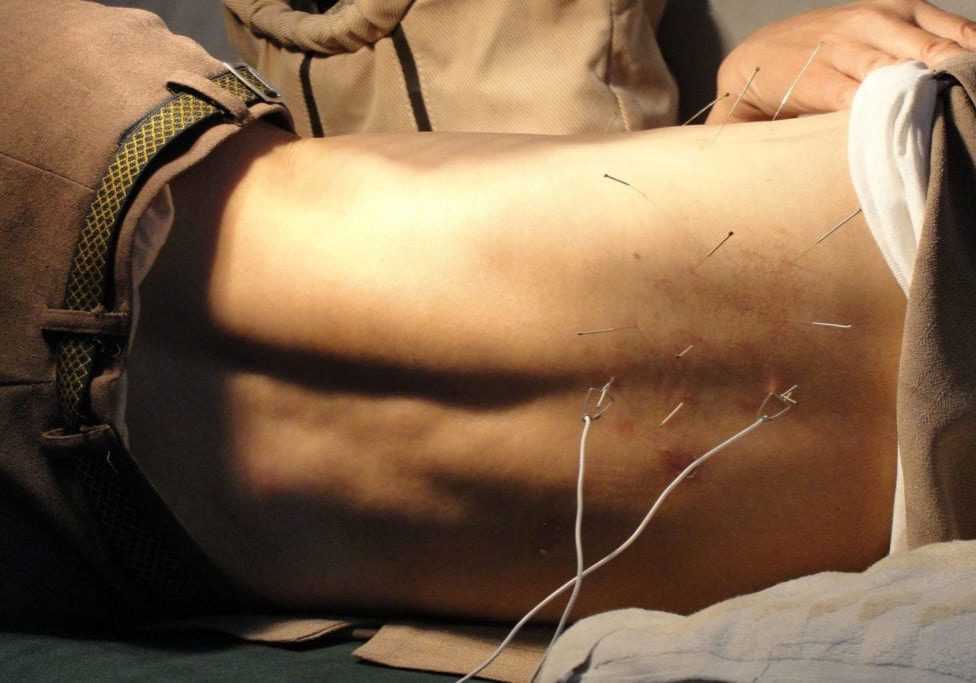Dry Needling
Dry needling is a safe, effective technique used by physios to treat pain and improve movement. Fine, sterile filament (acupuncture) needles are inserted into the skin and muscle directly at a myofascial trigger point or ‘knot’, causing the muscle to relax.
Research shows that dry needling can help:
- Release muscle tension
- Stimulate the release of pain-relieving chemicals
- Restore and improve function
The approach is based on Western anatomical and neurophysiological principles which are not to be confused with the Traditional Chinese Medicine (TCM) technique of acupuncture.
Which conditions or injuries may benefit from Dry Needling?
Dry needling can be used for a variety of musculoskeletal problems. Muscles are thought to be a primary contributing factor to the symptoms. Conditions which respond to dry needling include, but are not limited to:
- Headaches
- Frozen Shoulder
- Tennis elbow
- Carpal tunnel syndrome
- Golfer’s elbow
- Buttock pain
- Leg pain
- Shin splints
- Hamstring strains
- Muscle Spasms
- Fibromyalgia
- Sciatic Pain
- Hip Pain
- Knee Pain
- Repetitive Strain Injuries
The benefits of Dry Needling frequently include more than just relief from a particular condition. Many people find that it can also lead to increased energy levels, better appetite and sleep as well as an enhanced sense of overall wellbeing.
Frequently Asked Questions
How does Dry Needling work?
The exact mechanism is not known but there are mechanical and biomechanical effects. The pioneering studies by Dr Shah and colleagues at the National Institutes of Health (USA) suggest that inserting a needle into trigger points can cause favourable biochemical changes which assist in reducing pain. A myofascial trigger point consists of multiple contraction knots, which are related to the production and maintenance of the pain cycle.
It is essential to elicit a Local Twitch Response which is a spinal cord reflex and is the first step in breaking the pain cycle.
Something causes pain, if it happens often enough or if the trauma is great enough, the pain signal may return through the Sympathetic Ganglion and activate Primary Afferent Nociceptors (H) which will feedback to the spinal cord. This will cause pain to continue instead of fade and is called a Reflex Arc.
At the same time, motor neurones may become stuck in a feedback loop/reflex arc, facilitating muscle spasm. In some cases, the reflex arc continues for years, even decades. Introducing a new stimulus (i.e. the needle) impedes the reflex arc and has the effect of relaxing the muscle.
How does Dry Needling interrupt the pain cycle?
A spasmed muscle becomes a damaged muscle. Spasm reduces blood flow in the muscle. This means less oxygen and nutrients to the muscle. Muscle fibres die off and get replaced by fibrous scar tissue. This, in turn, holds the muscle tight, prevents muscle metabolites from leaving the muscle and causes continued spasm and pain. Putting a needle into a spasmed muscle causes the muscle to relax, this can be seen with an electromyogram (EMG).
What does Dry Needling feel like?
Generally, needle insertion is not felt. Occasionally, the local twitch response may provoke a brief sensation which is sometimes described as a tiny electric shock.
Are the needles sterile?
Yes, only sterile disposable needles are used.
How long does it take for the procedure to work?
Typically, it takes several visits for a positive reaction to take place. We are trying to cause mechanical and biochemical changes without any medication. Therefore, we are looking for a cumulative response to achieve a certain threshold after which the pain cycle is disturbed.
What if My GP is not familiar with Dry Needling?
Dry needling is a relatively new method of treating myofascial pain and not everyone is already aware of this effective modality. Feel free to inform your GP about this treatment option and the Clinic can be contacted for further queries.
Where does Dry Needling fit into my rehabilitation program?
More frequently, dry needling is needed at the beginning to help break the pain cycle than other treatment modalities are introduced.
Acupuncture
Originating in China, acupuncture is a system of complementary medicine that encourages the body to promote natural healing and improves function and balance.
Which conditions can Acupuncture help with?
- Chronic and acute pain
- Digestive disorders; gastritis, constipation, diarrhoea
- Respiratory disorders; sinus, sore throat, bronchitis, recurring chest infections, asthma, hay fever
- Joint and muscular disorders; headaches, neck pain, frozen shoulder, tennis elbow, lower back pain, sciatica, osteoarthritis
- Psychological disorders: anxiety, stress, depression and sleep issues
How does it work?
Energy channels called meridians, run in regular patterns throughout the body. Meridians are like rivers of energy all over the body and when there is a blockage or obstruction in the movement of these rivers, just like a dam, they can back up.
Inserting very thin and therefore painless needles into the precise acupuncture points that are found throughout the body re-establishes the flow of energy through the meridians.
What are the effects?
Acupuncture helps the body’s internal organs to correct imbalances in digestion, absorption and energy production activities as well as the circulation of energy and hormone function. The treatment stimulates the brain to release endorphins, which are natural ‘feel good’ hormones, providing natural pain relief.
Improved energy and biomechanical balance produced by acupuncture results in stimulation of the body’s natural healing abilities and promotes physical and emotional well-being.

